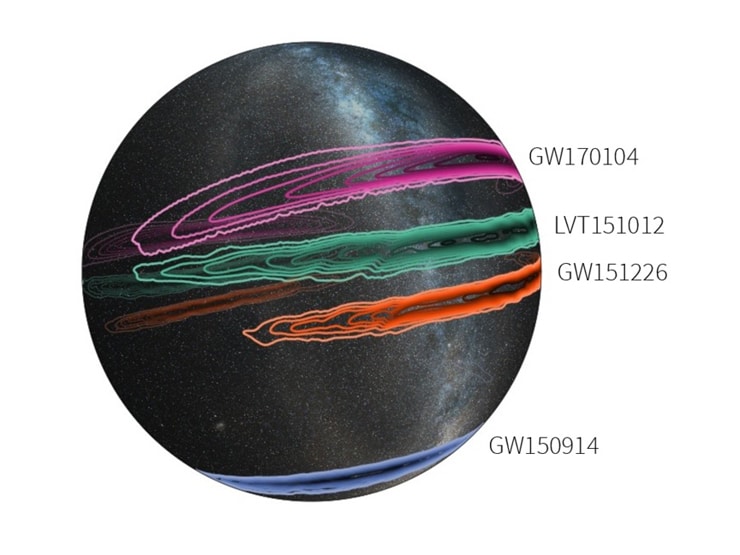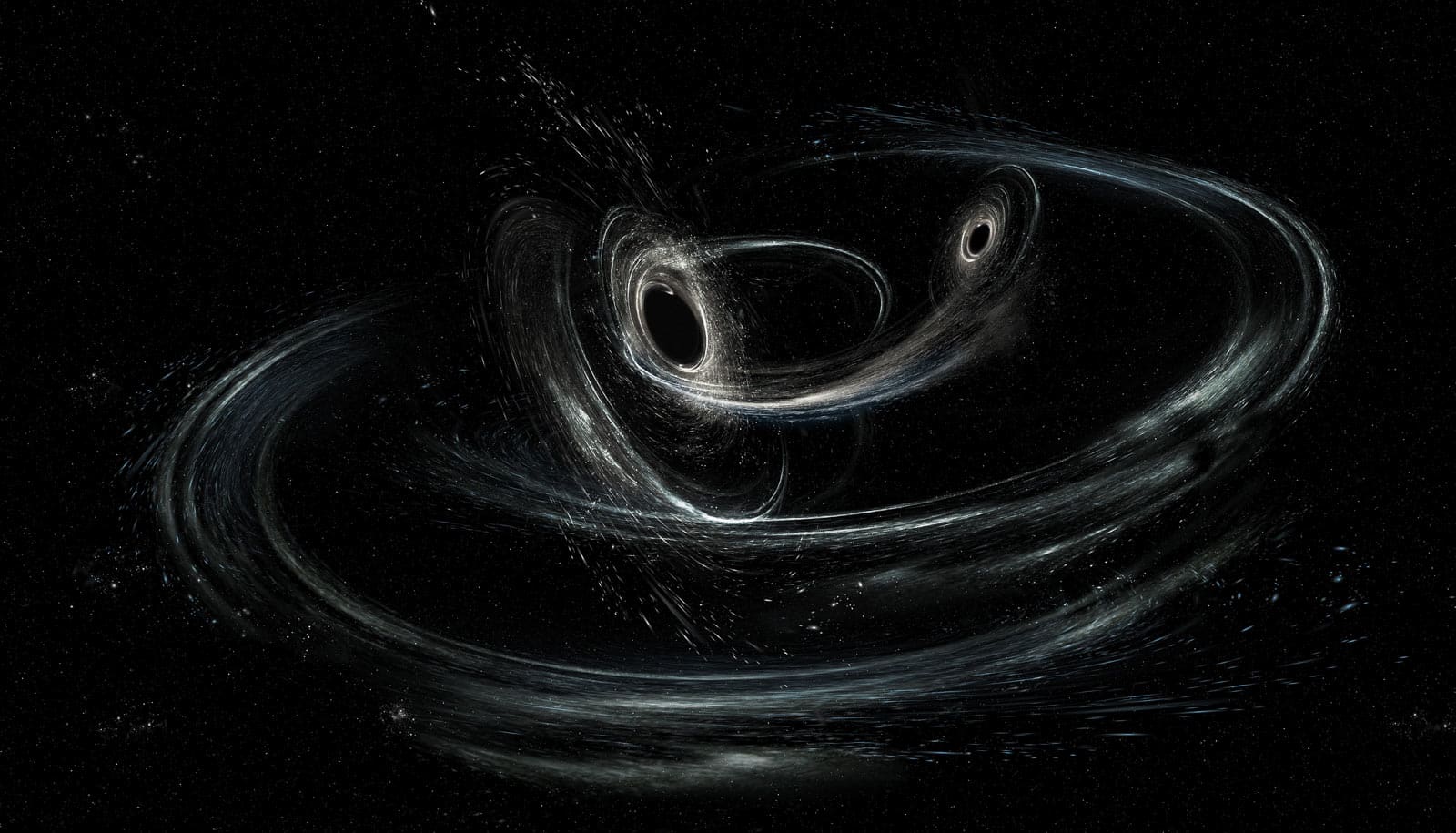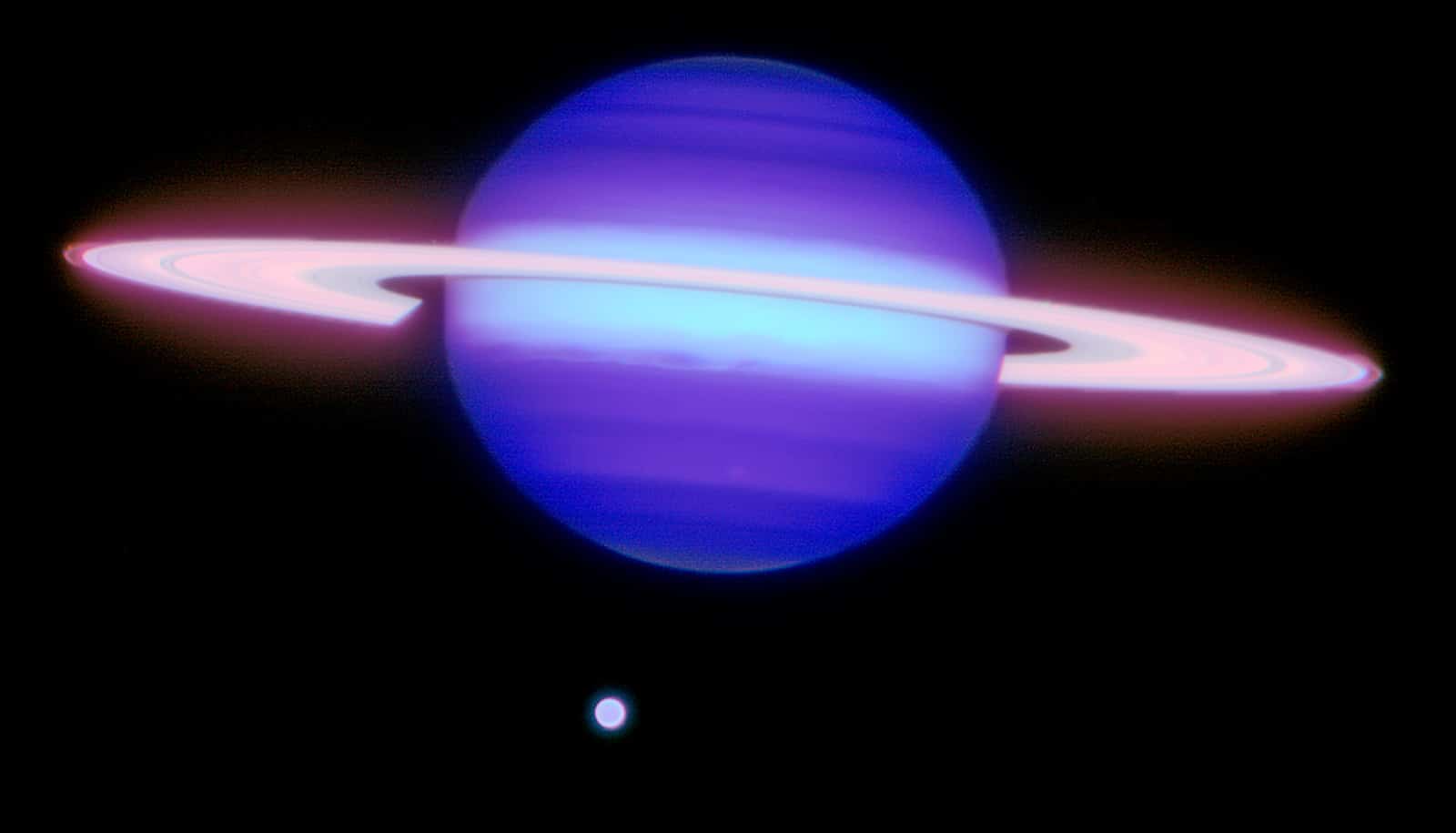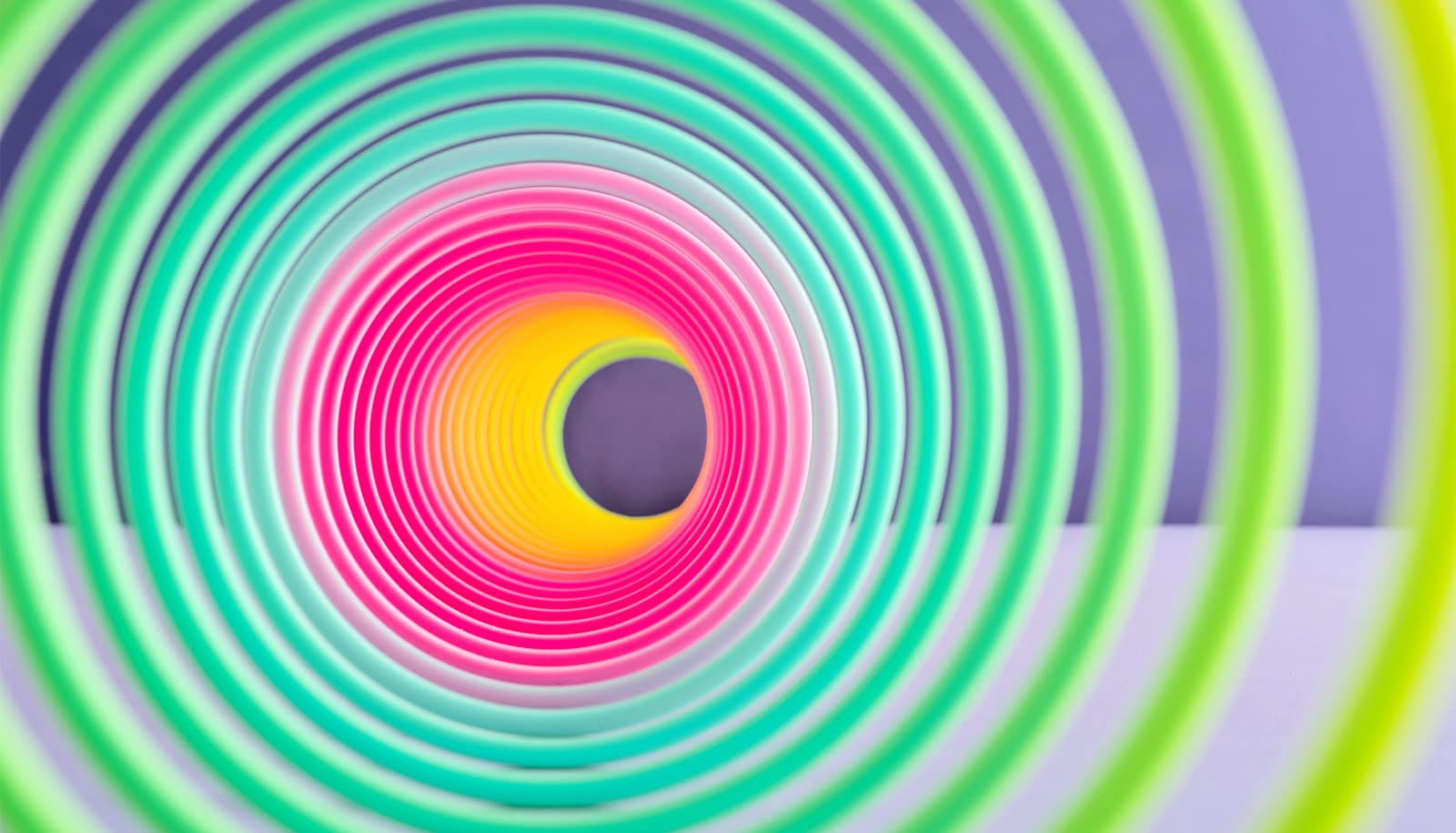Researchers have announced the third detection of gravitational waves—ripples in the fabric of space and time.
Albert Einstein predicted gravitational waves as part of his theory of general relativity more than 100 years ago, but it has taken astrophysicists more than 50 years of trial and error to find the direct evidence to support his theory.
The Laser Interferometer Gravitational-wave Observatory (LIGO) made the detection January 4, 2017. Gravitational waves pass through Earth and the extremely sensitive LIGO detectors can “hear” them.
Hear the “chirps” of the gravitational waves in this podcast episode:
The long-awaited triumph in September 2015 of the first-ever direct observation of gravitational waves completed Einstein’s vision of a universe in which space and time are interwoven and dynamic.
“It is remarkable that humans can put together a story and test it, for such strange and extreme events that took place billions of years ago and billions of light-years distant from us.”
This third and latest detection points to merging black holes that are twice as far away from Earth as the two earlier pairs—about 3 billion light-years away. And this time the two black holes were unequal in size, one significantly lighter than the other. They merged into a black hole whose size is in the middle of the other two merged black hole pairs.
“Our handful of detections so far is revealing an intriguing black hole population we did not know existed until now,” says Vicky Kalogera, a senior astrophysicist with the LIGO Scientific Collaboration (LSC), which conducts research related to the twin LIGO detectors, located in the US. She is also director of Northwestern University’s astrophysics center, CIERA, and professor of physics and astronomy.
“Now we have three pairs of black holes, each pair ending their death spiral dance over millions or billions of years in some of the most powerful explosions in the universe. In astronomy, we say with three objects of the same type you have a class. We have a population, and we can do analysis.”
“Once again, the black holes are heavy,” says Shane L. Larson, researcher associate professor of physics and astronomy at Northwestern and an astronomer at the Adler Planetarium in Chicago.
“The first black holes LIGO detected were twice as heavy as we ever would have expected. Now we’ve all been churning our cranks trying to figure out all the interesting myriad ways we can imagine the universe making big and heavy black holes.”
The third detection is the subject of a new paper accepted for publication by the journal Physical Review Letters.
So, why all the hubbub about gravitational waves?
“With the third confirmed detection of gravitational waves from the collision of two black holes, LIGO is establishing itself as a powerful observatory for revealing the dark side of the universe,” says David Reitze of Caltech, executive director of the LIGO Laboratory. “While LIGO is uniquely suited to observing these types of events, we hope to see other types of astrophysical events soon, such as the violent collision of two neutron stars.”

About 50X the mass of our sun
The latest finding solidifies the case for a new class of black hole pairs, or binary black holes, with masses that are larger than researchers believed possible before LIGO.
“As was the case with the first two detections, the waves detected in our new paper were generated when two black holes merged to form a larger black hole. In the latest merger, the final black hole was some 50 times the mass of our Sun,” explains coauthor Ling Sun, a PhD student at the University of Melbourne’s School of Physics and member of the Australian Research Council Centre of Excellence for Gravitational Wave (OzGrav).
This fills in a gap between the masses of the two merged black holes detected previously by LIGO, which had solar masses of 62 (first detection) and 21 (second detection).
“We have further confirmation of the existence of black holes that are heavier than 20 solar masses, objects we didn’t know existed before LIGO detected them,” says David Shoemaker of MIT, who is spokesperson for the LSC. “It is remarkable that humans can put together a story and test it, for such strange and extreme events that took place billions of years ago and billions of light-years distant from us.”
Powerful collisions
The new detection, called GW170104, occurred during LIGO’s current observing run, which began November 30, 2016, and will continue through the summer. Twin detectors, one in Hanford, Washington, and the other in Livingston, Louisiana, carry out LIGO’s observations.
Did gravitational wave detector find dark matter?
LIGO made the first detection of gravitational waves in September 2015 during its first observing run since undergoing major upgrades in a program called Advanced LIGO. The second detection took place in December 2015. (The LIGO detectors were offline for nearly a year, from January to November 2016.)
In all three cases, each of the twin detectors of LIGO detected gravitational waves from the tremendously energetic mergers of black hole pairs—collisions that produce more power during the instant before the black holes merge than is radiated as light by all the stars and galaxies in the universe at any given time.
The recent detection is the farthest yet, with the black holes located about 3 billion light-years away. (The black holes in the first and second detections are located 1.3 and 1.4 billion light-years away, respectively.)
Two theories
There are two primary models to explain how binary pairs of black holes can be formed.
In one model, the black holes come together later in life within crowded stellar clusters. The black holes pair up after they sink to the center of a star cluster. In this scenario, the black holes can spin in any direction relative to their orbital motion.
“This is the first time that we have evidence that the black holes may not be aligned, giving us just a tiny hint that binary black holes may form in dense stellar clusters,” comments B. P. Sathyaprakash, professor of physics and of astronomy and astrophysics at Penn State and co-leader of the paper.
The other model proposes that the black holes are born in the same binary system: they form when each star in a pair of stars explodes, and then, because the original stars were spinning in alignment, the black holes remain mostly aligned, even if not perfectly aligned.
GW170104 hints that at least one of the two black-hole spins might be misaligned with the binary orbit, mildly favoring the formation theory of dense stellar clusters.
The LIGO Laboratory receives funding from the National Science Foundation (NSF) and is operated by Caltech and MIT, which conceived and built the observatory. The NSF led in financial support for the Advanced LIGO project, with funding organizations in Germany (MPG), the UK (STFC), and Australia (ARC) making significant commitments to the project.
More than 1,000 scientists and engineers from around the world participate in the effort through the LIGO Scientific Collaboration, which includes the GEO Collaboration. LIGO partners with the Virgo Collaboration, which has the support of the Centre National de la Recherche Scientifique (CNRS), Istituto Nazionale di Fisica Nucleare (INFN), and Nikhef, as well as Virgo’s host institution, the European Gravitational Observatory, a consortium that includes 280 additional scientists throughout Europe. A list of additional partners is available here.
Source: Northwestern University, Penn State, University of Melbourne



